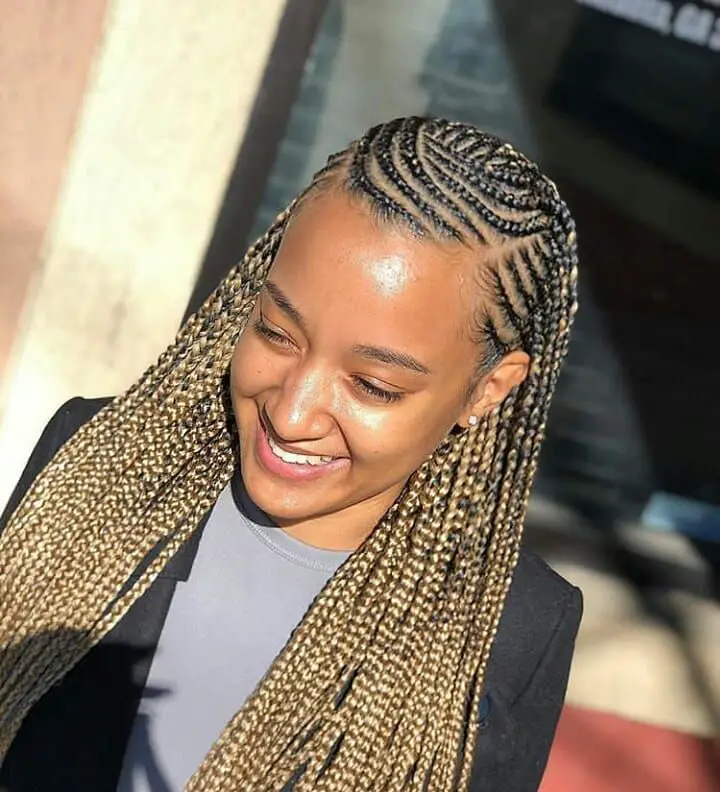Understanding the difference between braids and cornrows goes beyond simply knowing they are both braided styles.
From the way they are woven to how they sit on the scalp, each style has its own technique, look, and cultural significance, making it important to know what sets them apart.
Table of Contents
Cornrows vs Braids: What “Braids” Generally Means
“Braids” (also called plaits) describe the act of interlacing three or more strands of hair to form a pattern.
They encompass many styles—loose braids, long hanging braids, box braids, twists, etc. The key features:
- The hair may be freely hanging or fixed.
- The braid might start off the scalp, or incorporate extensions, depending on the style.
- There is less emphasis on the way the braid is anchored very close to the scalp.
For example, in many “braid” styles you’ll section the hair and simply braid down from the part, letting the braid fall freely.
Cornrow vs Braids: What Cornrows Are

Cornrows refer to a specific method of braiding where the hair is braided very close to, or onto, the scalp in continuous rows.
Key characteristics:
- The braid is formed by repeatedly adding small sections of hair (three‑strand braiding) so the braid lies flat and raised along the scalp.
- The rows can be straight back, curved, geometric, or follow more intricate patterns.
- Because the braid is anchored tightly to the scalp, the overall hairstyle is closer and more integrated with the head rather than simply “hanging down”.
Key Differences Between General Braids vs Cornrows (Including Cornrows vs Box Braids)
Here are some of the major points of difference:
- Attachment to scalp: Cornrows are braided onto the scalp so that the braid appears as a raised row following the scalp’s contour. A general braid may start off the scalp and simply hang freely without being anchored.
- Look and pattern: Braids can be individual and free‑hanging (for example long box braids). Cornrows typically have the hair partitioned into rows and braided in place, sometimes forming patterns or designs.
- Installation time and longevity: Because cornrows sit close to the scalp and are generally quicker to install than very fine individual braids or elaborate hanging braids, their installation and removal times differ. Also, the haircut’s maintenance period can differ. For instance, some sources note that hanging braided styles might last longer before needing redo compared to scalp‑hugging cornrows in certain cases.
- Versatility in styling: Free‑hanging braids often offer more styling options (bun, ponytail, free flow) once installed because the braid isn’t fixed to the scalp. With cornrows, the initial design largely dictates the shape and you may have less freedom to reshape the braid itself without undoing it.
- Cultural and historical context: Cornrows hold deep roots in African and African‑diaspora traditions, with documented history and cultural significance. While braided styles in general also appear in many cultures worldwide, the technique of cornrowing is more specific in its form and cultural context.
Why the Difference Between Braids and Cornrows Matters
Understanding the difference helps for several reasons:
- Picking the right style for your needs (maintenance, longevity, scalp comfort).
- Communicating clearly with a stylist so you can get exactly what you want.
- Appreciating the cultural significance and origins of certain hairstyles when deciding how to wear them.
What to Keep in Mind When Choosing One or the Other
If you want something that hugs the head, possibly has patterns, and is well anchored, cornrows may be your choice.

Is It Cornrows or Cornrows?
It is cornrows.
Photo Credits: Coveteur, Maria
READ ALSO: Box Braid Hair 2023: A Bold Statement in Hair Fashion